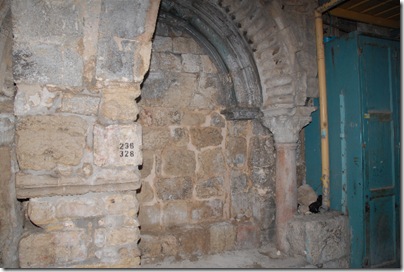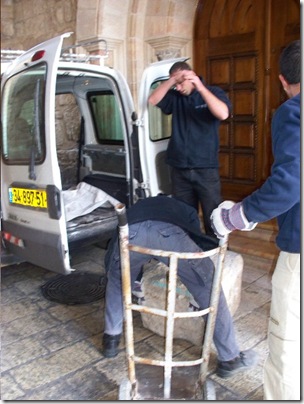In a follow-up to the previous posting on the IAA’s work on the western gate (“Mary’s Gate”) of the Church of the Holy Sepulcher, Craig Dunning sends along a few photos.
The first photo shows the gate at the beginning of the month. Note the stone on the bottom right (with a blue stripe).
The photo below was taken last week and shows the area with construction work underway. The stone shown above has been removed.
In this photo, you can see the stone being transported by the authorities.
Evidence supporting the Jordanian official’s claim that the gate has been opened is lacking.



